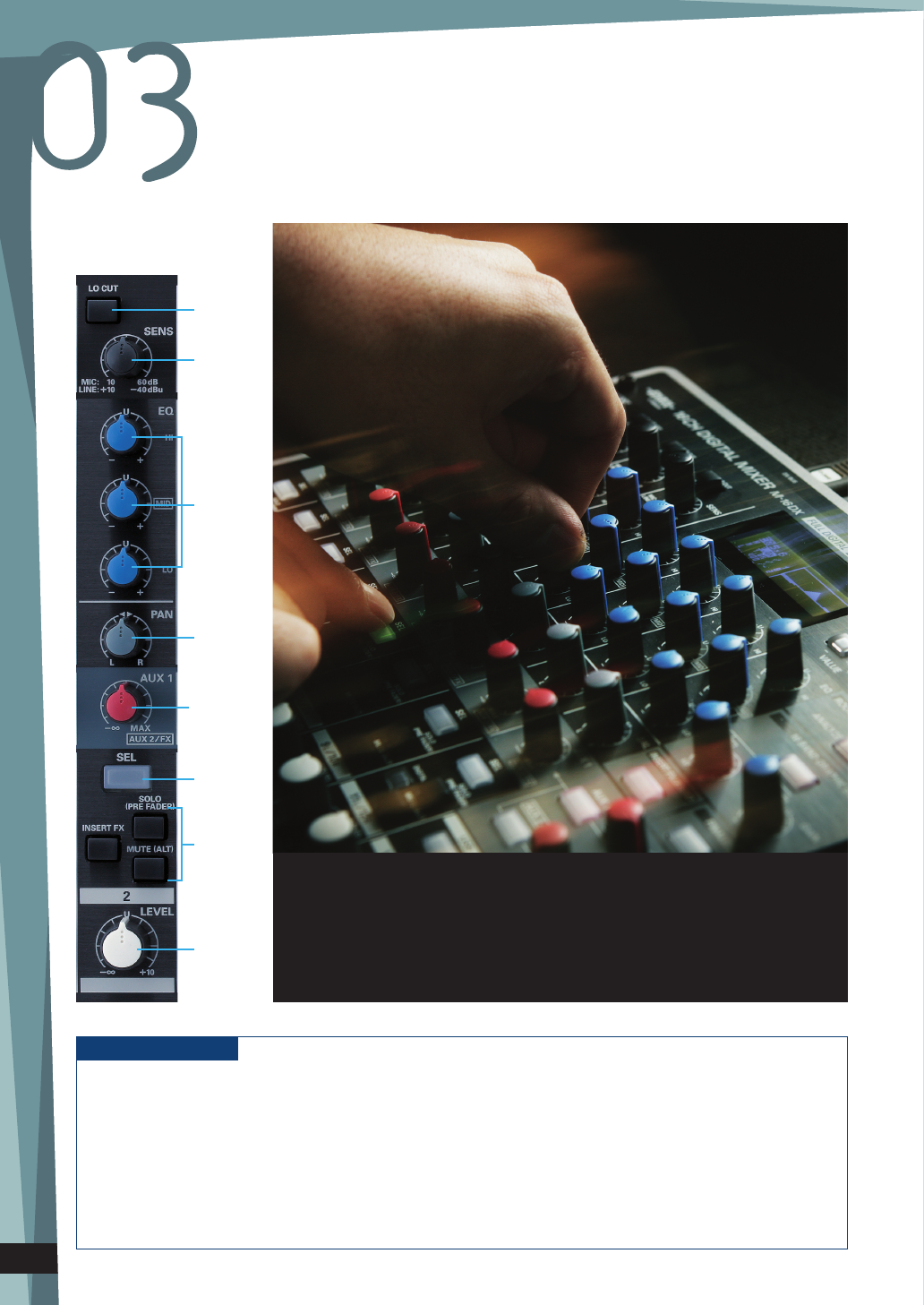
High-quality audio. Full digital processing. Sophisticated functionality. These pro-
fessional specifications sought by everyone are no longer limited to advanced prac-
titioners. Even if you’re using a digital mixer for the first time, you deserve to be able
to control your sound intuitively and understandably. As a result of our pursuit of
this goal, we’ve succeeded in joining the friendly usability of an analog mixer with
the sophisticated functionality of digital processing. With their amazing quality and
versatility, the M-16DX/M-10DX are powerful mixing tools for all musical creators.
Analog-style control for a digital mixer.
Advanced operability lets you quickly
get the sound you want
M-16DX
LO CUT
Switch
SENS
Knob
PAN
Knob
AUX SEND
Knob
Channel
LEVEL
Knob
SEL
Button
FX/SOLO/
MUTE
Switch
3-band
Knob
Glossary
MAIN OUT
This outputs the final mixed
sound.
PHONES/
CONTROL ROOM
These are outputs used for
monitoring. By turning a switch
on or off, you can mix the signal
from the ALT outputs or the
sound processed by FX (echo/
reverb) with the signal of the
main outputs that is sent out
from these outputs. If you turn
on the SOLO switch, the SOLO
signal will be output from here.
ALT OUT
The post-fader signal of the
channels whose MUTE (ALT)
switch is on will be output
from here.
Pre-fader/
Post-fader
(→p.4 “Signal flow
(conceptual diagram)”)
AUX SEND 1,2
These are auxiliary output
jacks that can be freely used
as needed. They can be used
as effect sends connected to
external effect processors.
AUX1 will output the pre-/
post-fader signal (selectable),
and AUX2 will output the
post-fader signal.
8


















